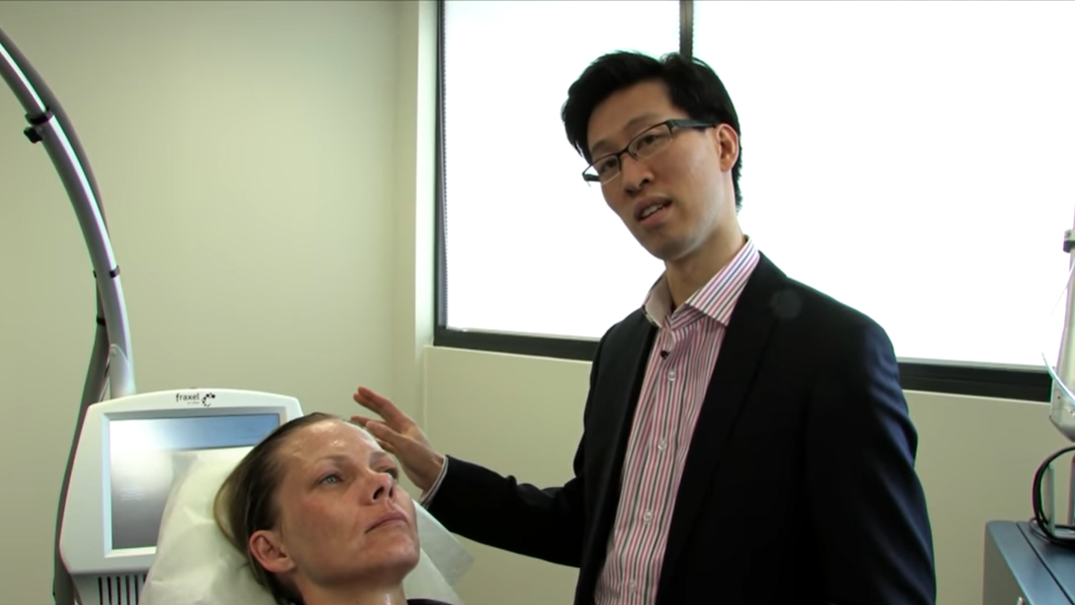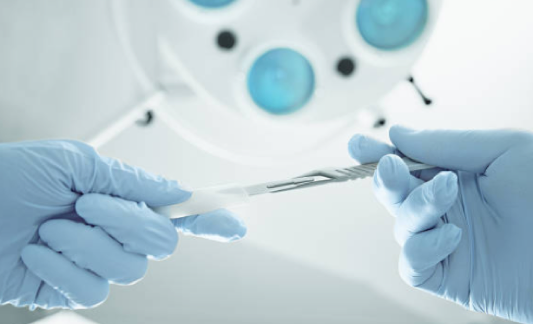Non-surgical Procedures, Skin care
Can laser remove pigmentation?
Are you noticing discolouration or even more sun spots on your skin and wondering if there are ways to restore it? Laser pigmentation removal treatment is a non-invasive way to help reduce the visibility of apparent age spots, sun damage and freckles, discolouration, birthmarks and more.
Our skin changes regularly and overtime, a number of factors can result in pigmentation changes, such as your daily routine, activities, skincare routine, genetics, hormones, and sun exposure. Particularly under the famous and immensely damaging sun in Australia, pigmentation changes and damages can occur more often.
There are a range of laser treatments that cater to a variety of pigmentation changes that you want removed. Prior to treatment, the types of pigmentation must first be identified to ensure the most effective tools are used to treat your skin.
What is pigmentation?
Pigmentation or pigmented lesions involves any alteration in the colour of the skin due to abnormal melanin production occurring in the body. Hyperpigmentation is the most common discolouration of the skin, it refers to the areas of the skin darker than the surrounding skin due to an excess amount of melanin production. The less common type is hypopigmentation, this occurs when the skin is lighter than the surrounding area.
Additionally, pigmentation can be categorised more specifically into epidermal (superficial pigmentation), dermal (deeper pigmentation) and mixed. This is often a result of UV exposure, genetics, ageing or hormones. We have listed the most common types of pigmentation changes below, as it is essential to first identify the pigmentation type you have prior to deciding on the appropriate laser treatments.
Epidermal
Freckles
Freckles appear close to the surface of the skin as small brownish spots as a result of UV exposure. Ongoing and/or prolonged UV exposure will intensify the colour and the areas that unwanted freckles may spread to.
Solar Lentigos
Similarly to freckles, solar lentigos are caused by sun exposure and appear as brown patches. This is more common in people over the age of 40.
Cafe-au-lait Macules
Commonly known as birthmarks, Cafe-au-lait macules appear as flat skin lesions and vary from light to dark brown colours. The size and colour may change over time.
Post-inflammatory Hyperpigmentation
This type of hyperpigmentation occurs after injuries, often from thermal burns, cuts, infections, and sunburns. It is usually temporary and the dark patches eventually subsides once the injured areas are healed. However, there may be instances where pigmentation remains or returns.
Dermal
Moles (Nevus)
Moles also known as nevus or beauty marks are common forms of skin growth. The appearances vary in colour, shapes and sizes, though it remains consistent in appearing darker than your natural skin tone. Whilst most are harmless, it is best to seek advice from a dermatologist.
Hori’s macules (Hori’s Nevus)
Hori’s Macules or Hori’s Nevus is a facial pigmentation condition, appearing on the cheeks as patches of blue-grey or brown-grey colours. It is an acquired condition that occurs later in adulthood, and is most common amongst middle-aged Asian women.
Nevus of Ota
Nevus of ota is another acquired facial pigmentation that produces excessive melanin cells, appearing as dark blue-grey or brown-grey patches around the eyes and cheeks regions.
Mixed (Epidermal and Dermal)
Melasma (Chloasma)
Melasma or chloasma is a pigmentation condition appearing as darker skin patches on the face and other sun-exposed areas. Changes in oestrogen levels through pregnancy, birth control pills, and oestrogen abnormalities is the primary cause for melasma, and can be worsened by UV exposure.
What causes pigmentation?
Skin pigmentation conditions are usually caused by fluctuating levels of melanin production. Abnormal melanin activities in the body lead to darker or lighter pigments forming which becomes visible on the skin surface. The primary causes for melanin production and pigmentations include:
- Genetics
- UV Radiation
- Hormones
- Skin lesions (eg. injuries, infections, inflammation)
- Acne
- Medications
- Topical agents (eg. skincare products)
Does laser pigmentation removal hurt?
The laser treatment is swift and usually not painful. However, with different laser pigmentation removal treatments available, there will be varying levels of discomfort depending on the type of pigmentation that is being treated.
Depending on the treatment being done, topical numbing agents are used to help ease the process. As well as utilising cool air to provide more comfort for the patient whilst protecting the skin. Overall, laser treatments are non-invasive, however discomfort levels will vary from patient to patient.
When is the right time to do laser pigmentation removal?
Whether you are starting to notice pigmentation changes in your skin or have had it for a while. There is no time like the present to start the process of removing or minimising the pigmentation on your skin.
Can pico laser remove pigmentation?
Pico laser treatment is one of the most popular procedures for targeting both epidermal and dermal pigmentations. It is also the standard treatment for melasma. Pico laser works by targeting and breaking down the darker pigmentation in the skin, which your body’s immune system will naturally remove.
The PiQo4 laser is a powerful new generation of pico lasers, operating at a billionth of a second. Suitable for various skin tones and pigment conditions, including treatments for tattoo removals, skin rejuvenation, age spots, sun damages, and birthmarks.
What other laser treatments remove pigmentation?
Other laser technologies are available that may be more suitable in treating specific pigment conditions, some lasers are more equipped to handle superficial pigmentation, whilst other lasers treat deeper hyperpigmentation effectively.
Fraxel Laser
If you are looking for a laser treatment to smooth over fine lines on the skin, to stimulate new elastin and collagen production, the Fraxel Laser is suitable for achieving a rejuvenated appearance. It is a coverage treatment of the whole face, rather than only doing spot treatments. It is most suitable for targeting a variety of skin pigmentations, including:
- Freckles
- Brown spots
- UV damaged skin
- Wrinkles
- Acne scarring
Ruby Laser
The Ruby Laser emits short high power ruby coloured light that is successful at targeting tattoos, hair follicles (laser hair removal), and skin pigmentations such as birthmarks, melasma, freckles, sun spots and sun damage.
Afterwards the skin may appear mildly sunburnt for one to two days. And the recovery time will vary depending on the aggressiveness of the treatment.
Gemini Laser
Gemini Laser is another great spot treatment to remove hyperpigmentation, it is especially suited to treat freckles, sun damages, port-wine stains, and visibilities of veins and capillaries.
The Gemini Laser operates at 532nm wavelength that is selectively attracted to haemoglobin in blood vessels and melanin. As the laser does not penetrate the skin very deeply, it is more suitable for superficial pigmentation removals. However, multiple treatments may be required to yield the desired results.
Can laser remove pigmentation?
Laser treatment is an effective and non-invasive way to remove or minimise pigmented spots on your skin. However, in order to know which laser treatment to use, the type of pigmentation needs to be correctly diagnosed first.
Additionally, even though laser treatments are effective, there are instances where pigmentation may resurface. Usually as a result of improper aftercare, ageing, minimal sun protection, or hormonal factors. We have provided a guide below to follow in order to maximise the results after treatment.
How many laser treatments are necessary?
The number of treatments will vary depending on the severity of the pigmentation, in other words, how deep under the skin surface does the pigmentation go (epidermal, dermal, or mixed). Generally speaking, the average patient usually requires four to six treatments to achieve their desired results.
A consultation will determine the amount of treatments you may need. More sessions may be necessary if you are after a complete removal, compared to fewer sessions required when seeking only to minimise the appearance of pigmented areas.
How can I protect my skin after laser pigmentation removal?
To achieve and maintain optimal results, whilst trying to keep pigmentation from returning, it will be an ongoing commitment. The initial aftercare combined with regular skincare routines are essential to avoiding the regeneration of pigmented skin. The most important recommendation is to avoid direct sun exposure, as it is the fastest way to revive pigmentation patches or cause new skin conditions to arise.
Post laser treatment aftercare (0 – 10 days)
After the laser treatments, there may be mild swelling and burn-like symptoms as your skin takes time to heal. The skin’s barrier is more vulnerable to ultraviolet (UV) radiation, and susceptible to bacterial infection if not taken care of properly. The post-procedure routine should focus on soothing and restoring the treated area for at least the first ten days. We recommend combining the below tips to maximise the best recovery results.
- Immediately apply the recommended post-treatment moisturiser
- Keep area cool and dry
- Avoid sun exposure
- Use gentle, non-abrasive cleanser
- Minimise contact with treated area
Limit makeup wear
It is best to avoid applying any makeup for the first three days as these products may irritate the skin immediately after the laser treatment.
Limit exercising
Strenuous exercises causing excessive sweating should be avoided in the first three days, as it can cause the skin to overheat and adversely affect the healing process. Additionally, exercising should be limited until your skin has completely healed, though low-impact activities on cooler days are acceptable.
Apply sunscreen daily
Sunscreen is one of the most essential and easiest ways to protect your skin and should be diligently applied on a daily basis. Whether it’s a sunny or cloudy day, UV radiation is present and can damage your skin severely without sunscreen. Additional sun protective measures can include wearing a hat, sun protective clothing, seeking shade, and to avoid tanning or sun beds.
The sunscreen you purchase should be SPF30 or above to be effective in protecting the skin. If you are spending prolonged periods outdoors, sunscreen should be applied every 2-3 hours.
Moisturise daily
Moisturising daily can help boost production of your skin cells and form a healthy protective barrier whilst the skin is still healing. However, avoid heavy or thick creams for the first 24-48 hours after your treatment, opt for hydrating mist or gels instead.
Additionally, seek out what moisturisers agree with your type of skin, whether it be products better suited for oily, dry, normal or sensitive skin types.
Limit unnecessary contact with treated area
Avoid contact with treated areas as much as possible to ensure a proper recovery is achieved. Frequent contact with any sort of open wound will slow the healing process and may introduce new bacteria that could increase the inflammation or lead to an infection.
Where can I get laser pigmentation removal in Melbourne?
Laser treatments can be a solution to combat a variety of skin pigmentation conditions. Not all patients are suitable for laser and a consultation is required.
At Victorian Cosmetic Institute, we operate with the latest clinical laser technologies with a focus to help maximise the effectiveness of laser treatments.
Making the first phone call to book your appointment can be daunting, so many patients prefer to book online. Alternatively, you can call us on 1300 863 824.

